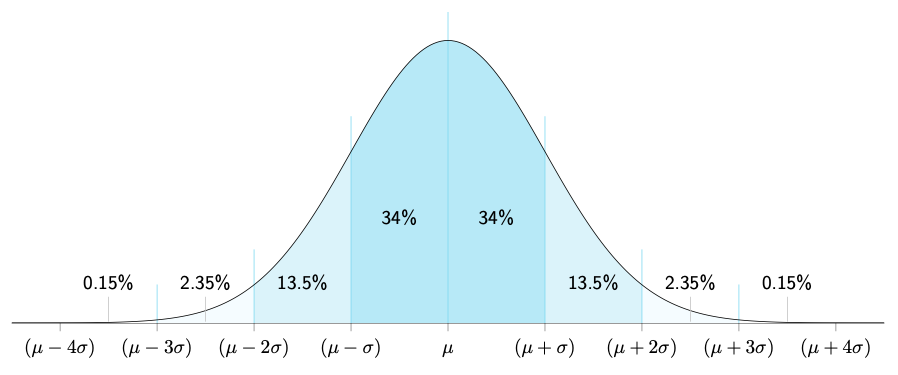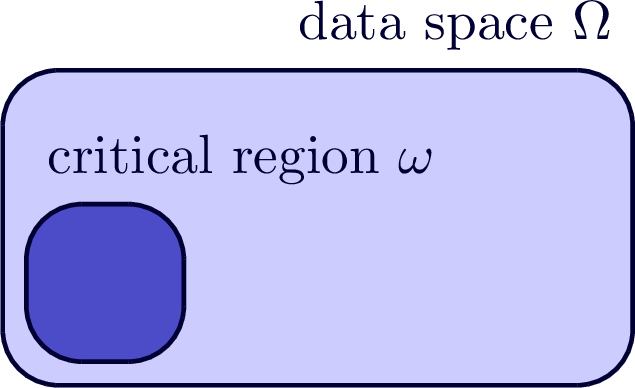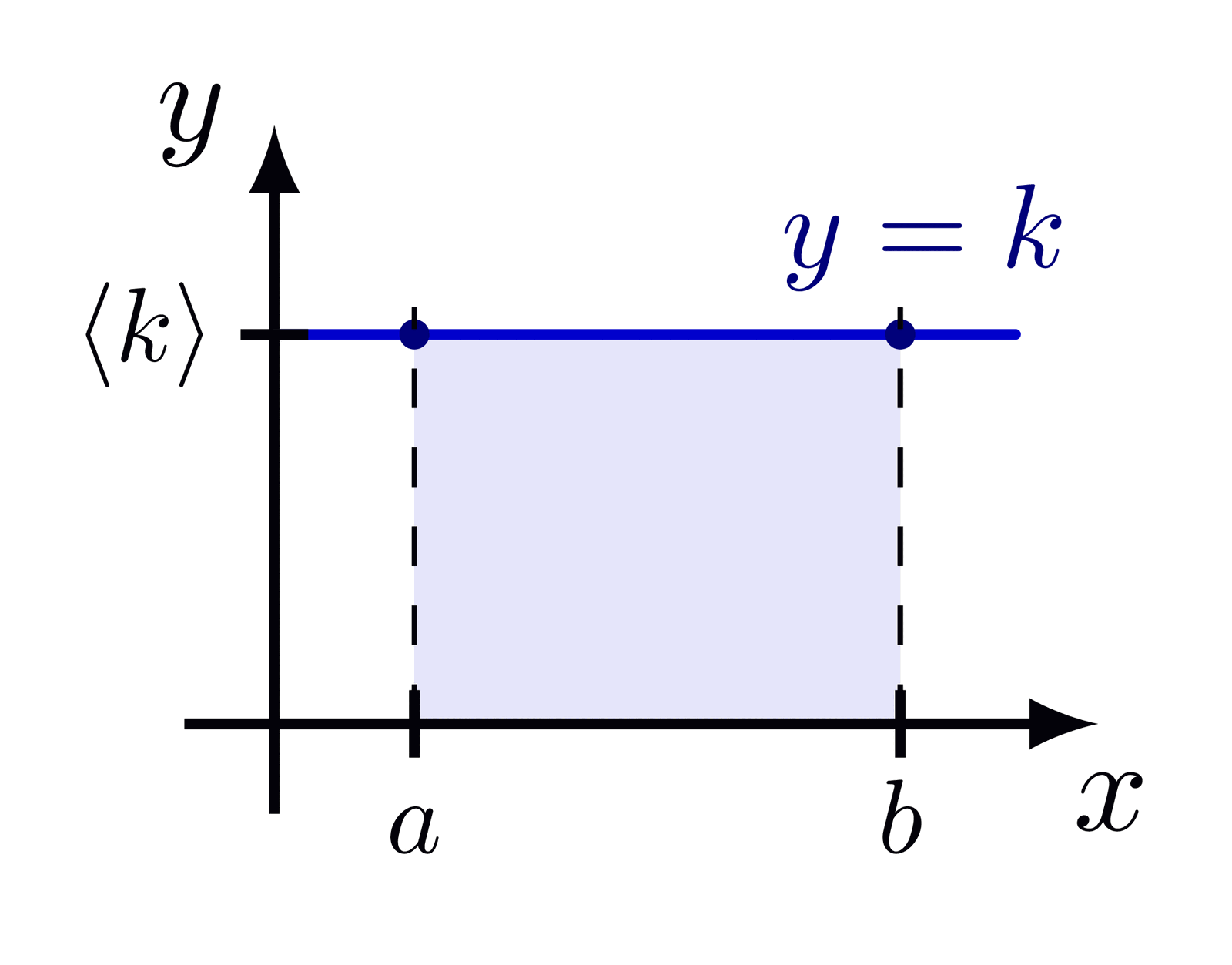The Normal Distribution is a bell-shaped curve where most data points gather around an average value, showing symmetry and a tendency for values to decrease as they move away from the mean. It’s a fundamental concept in statistics, representing common patterns in various real-world phenomena.
\documentclass[border=10pt]{standalone}
\usepackage{pgfplots}
\pgfplotsset{compat=1.18}
\usepgfplotslibrary{fillbetween}
\tikzset{every node/.style={font=\sffamily}}
\definecolor{linecolor}{HTML}{7AD7F0}
\definecolor{grad1}{HTML}{92DFF3}
\definecolor{grad2}{HTML}{B7E9F7}
\definecolor{grad3}{HTML}{DBF3FA}
\definecolor{grad4}{HTML}{F5FCFF}
\begin{document}
\begin{tikzpicture}
\begin{axis}[
width = 17.5cm,
height = 7.25cm,
xmin = -4.5, xmax = 4.5,
ymin = 0,
axis x line* = bottom, % the * suppresses the arrow tips
hide y axis,
xtick = {-4,...,4},
% xtick = {0},
% tick label style = {color=white}, % uncomment this line and change all other
% xtick tags to remove x-axis markings
xtick align = outside,
xticklabels = {$(\mu-4\sigma)$, $(\mu-3\sigma)$, $(\mu-2\sigma)$,
$(\mu-\sigma)$, $\vphantom{(}\mu$, $(\mu+\sigma)$, $(\mu+2\sigma)$,
$(\mu+3\sigma)$, $(\mu+4\sigma)$}, % comment this if uncomment above;
%commenting this without uncommenting above makes markings integers
]
% This draws the vertical lines
\pgfplotsinvokeforeach {-3,-2,-1,0,1,2,3} {
\draw[linecolor, thin] (axis cs: #1,-1)
-- (axis cs: #1,{(1/sqrt(2*pi))*exp((-1/2)*(#1)^2)+0.05});
}
% This draws the main curve
\addplot [
domain = -4.5:4.5,
samples = 251,
color = black,
name path = dist
]
{(1/sqrt(2*pi))*exp((-1/2)*x^2)};
% This is necessary for the filling later
\path [name path = base] (\pgfkeysvalueof{/pgfplots/xmin},0)
-- (\pgfkeysvalueof{/pgfplots/xmax},0);
% This labels each section
\node at (axis cs: -0.5,0.15) {34\%};
\node at (axis cs: 0.5,0.15) {34\%};
\node at (axis cs: -1.5,0.058) {13.5\%};
\node at (axis cs: 1.5,0.058) {13.5\%};
\node[inner sep=0, pin={[pin edge={lightgray}]90:2.35\%}] at (axis cs: -2.5,0.0) {};
\node[inner sep=0, pin={[pin edge={lightgray}]90:2.35\%}] at (axis cs: 2.5,0.0) {};
\node[inner sep=0, pin={[pin edge={lightgray}]90:0.15\%}] at (axis cs: -3.5,0) {};
\node[inner sep=0, pin={[pin edge={lightgray}]90:0.15\%}] at (axis cs: 3.5,0) {};
% This is where we fill in the regions
\addplot [white] fill between [of = dist and base, soft clip = {domain=-4:4}];
\addplot [grad4] fill between [of = dist and base, soft clip = {domain=-3:3}];
\addplot [grad3] fill between [of = dist and base, soft clip = {domain=-2:2}];
\addplot [grad2] fill between [of = dist and base, soft clip = {domain=-1:1}];
\end{axis}
\end{tikzpicture}
\end{document}








